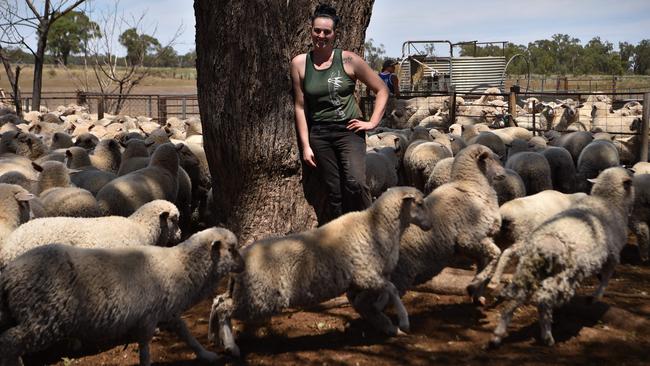
While our exact housing preferences differ, job location is always a crucial factor.
Property developers and investors can learn a lot about the future of the housing market by studying the latest employment forecasts from the Department of Jobs and Small Business.
From 2018 to 2023, Australia’s workforce is expected to grow by 886,000 jobs (from 12.6 million to 13.5 million). The nature of these jobs shapes the property market.
The trend towards clustering jobs in the centres of our largest cities will continue and intensify in many ways (75 per cent of all new jobs go to our capital cities).
NSW and Victoria will receive two-thirds of all new jobs and more than half (52 per cent) will cluster in Melbourne and Sydney alone. The three largest job growth centres are all in Melbourne, the fourth largest is the Gold Coast and only on rank six does Sydney appear.
This doesn’t mean Sydney is less attractive than Melbourne (both cities add more than 230,000 jobs), but Sydney is split into 15 employment regions while Melbourne is divided into nine.
No industry will come near the growth figures of healthcare, where more than 250,000 new jobs will be created.
Some of those new jobs will cluster in the medical precincts of our big cities. This will intensify price pressure on the housing market surrounding such facilities. Mostly we can expect the big job growth in healthcare will spread evenly across the nation, as healthcare professionals are needed everywhere to service our ageing population.
The good news for rural and regional Australia in general is that no region is forecast to experience net losses in jobs.
But there is sombre news hiding in the job forecasts.
Australia’s agriculture sector is expected to lose 1400 jobs. Not all regions are going to be hit equally hard. NSW will be the only state with agricultural job losses (minus 5600), while all other states see modest growth. The biggest loss of agriculture jobs (minus 1100) is projected in Queensland’s Wide Bay. On a state level, these losses are compensated for by strong growth in Mackay (plus 1500).
Agriculture jobs are vital for the health of regional communities. In many smaller towns, agricultural jobs make up more than a quarter of the workforce and other industries are mostly servicing agriculture businesses.
When agriculture jobs are lost in small communities, this can quickly lead to dangerous town shrinkage. Once a town falls below a certain threshold it can’t financially support the local supermarket, for example. Further population decline means the town can’t field a footy team. Step by step, the social life is drained out of these communities.
If small towns manage to attract jobs and population from other industries, the loss of agriculture jobs isn’t necessarily a problem. Some small towns might be able to establish themselves as residential satellites for larger regional centres. Workers in Victoria’s Horsham (population 17,000), live in Murtoa (population 900).
Let’s leave the countryside and have a look at how our cities might be shaped by the job forecasts.
Professional services jobs are growing strongly (plus 107,000). The lion’s share of these new knowledge jobs will cluster in the office towers of the Melbourne and Sydney CBDs. Jobs in this industry require so many highly educated workers. We can’t fill the vacancies without migration.
Adding new workers, especially skilled migrants, to the CBDs of Melbourne and Sydney puts pressure on the housing market in the inner cities. Recent migrants don’t know our local housing market and tend to choose housing close to their place of work when they first arrive in Australia.
Our cultural proclivities for food are also mirrored strongly in the job forecasts. The 81,000 hospitality jobs we are expected to create will cluster largely around the growing job centres and in the new residential areas.
Growth in the aforementioned industries and general population growth will drive demand for construction jobs. Construction is the second-fastest growing industry in Australia (plus 119,000). The industry is dominated by middle-skilled workers, namely tradies. That’s the traditional backbone of the Australian middle class.
While tradies change their “office” with every job they are on, construction activity will largely concentrate in the centre of our capital cities and on the urban fringe. Most construction workers will shun high-rise living and opt for the traditional three-bedroom house in the outer suburbs.
This leads us to the biggest observation hiding in the job forecast data. All jobs in Australia are assigned a figure from one to five, indicating how much formal education you must have before you can work in that job.
Almost half (45 per cent) of all the new jobs will require at least a bachelor’s degree. The 401,000 new skill level-one jobs will be disproportionably located in the CBDs of our capital cities.
This means these well-paid workers will be seeking housing near the city centres.
Many of the lower-skilled jobs will also be situated in the city centres. The barista and the barrister work in the same building.
The barrister can afford to buy a nice house in a leafy neighbourhood nearby, while the barista must choose between renting a flat near work or buying a cheap house in an outer suburb.
The shifting workforce will further segregate our cities along class lines, with only well-paid workers able to purchase property near job centres. Developers focused on luxury apartments in the inner city should be doing well over the next five years.
Low-skilled workers will live on the city fringe and be forced to commute. Developers will offer relatively cheap housing products targeted at a demographic pushed to its limits to buy a property.
The job forecasts suggest an Australia where some regional towns will struggle and where the large cities will increasingly be segregated by class.
None of this is written in stone. Governments interested in mitigating the effects of social segregation in our cities can do so by ringing in a decade of elevated infrastructure spending. Only a well-connected city can spread jobs and population in an even and ultimately fairer way.
Simon Kuestenmacher is director of research at The Demographics Group.




Most of us start with our job in mind when making housing decisions. A circle is drawn around our place of work, indicating how far we are willing to commute. Then the selection is finetuned considering affordability, schools, transport, safety and so on.